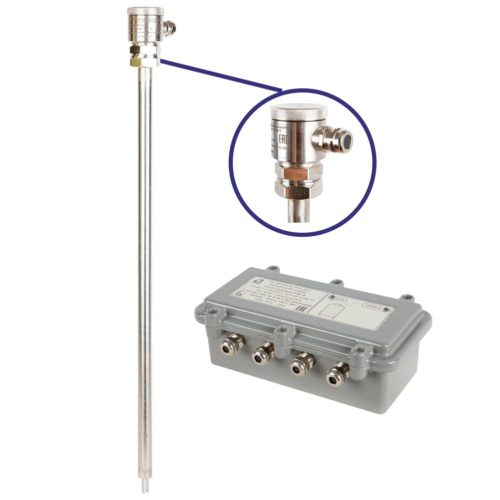

The alarm devices are designed to signal the limit values of the liquid level at one or more control points in technological tanks, storage facilities, tanks in stationary conditions and on mobile objects with the output of information about the liquid reaching the limit level in the form of a discretely changing analog signal, light indication, switching relay contacts or via the RS-485 interface.
Ultrasonic level detectors UZS-5 are designed for use in automated process control systems, alarm systems for technological and emergency liquid levels, pump protection systems, etc.
Level detectors are designed to work in conditions of high and low pressures, high and low temperatures, vibrations and shock shocks, exposure to aggressive and dangerous environments, salt fog, frost and dew, electromagnetic interference, special factors, etc.
The principle of operation of signaling devices is based on various properties of ultrasound propagation in a liquid and gas. The alarms have no moving parts and do not create acoustic interference.
Main features and advantages:
Scope of delivery:
Separate delivery of the alarm components is possible. It is possible to supply and operate an acoustic sensor without a secondary converter with the sensor power supply from the consumer’s equipment and using standard current output signal receivers.
Name of the organization
Contact person, full name
Contact information, tel., E-mail
Name of the environment
Features of the medium: crystallization, sticking, saturation with gas bubbles, etc.
Viscosity of the controlled medium
Density of the controlled medium
Temperature of the controlled environment
Pressure of the controlled medium
Sensor element material
Type of explosion protection
Housing type
Type of cable entry
Power supply parameters
Output signal
The length of the sensor element, from 60 to 6000 mm (for single-point design)*
The number of control points and their location in the multipoint version, specify the trigger points L1/L2/L3... /L8/